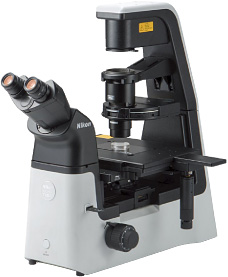Nikon Presents Two New Inverted Microscopes

Nikon will present two new inverted microscopes at the American Society for Cell Biology Annual Meeting. The ECLIPSE Ts2 and ECLIPSE Ts2R models are intended for routine laboratory tasks and basic research. The small-sized microscopes present improved workflow and functionality and a new contrast technique.
ECLIPSE Ts2 and ECLIPSE Ts2R Features
Both microscopes present the Emboss contrast technique, developed by Nikon, that produces 3D-like images with high contrast. It is an excellent solution to visualize thick samples not observable by common phase contrast methods. Plastic and glass plates are compatible with this technique, allowing to observe cell cultures and making these tools suitable for biological and medical research.
The ECLIPSE microscopes present LED illumination, eliminating the hassle of warming up the lamp and the need of frequently replacing it.
To improve the workflow, Nikon engineers have changed the microscopes design and have placed basic function controls at the front, for easier access. A new stage allows inspection of a 96-well plate. There is a new contrast shield that blocks environmental light, enabling observation of fluorescent samples in luminous rooms.
Both microscopes are 10% smaller that the average inverted microscope, saving space in the lab.
ECLIPSE Ts2
The ECLIPSE Ts2 replaces the TS100. It is a compact inverted microscope that can be placed inside hoods. It features LED-based diascopic and epi-fluorescence illumination. Thanks to the Emboss contrast technique, samples can be observed with high constrast on plastic or glass surfaces.
ECLIPSE Ts2R
The Ts2R is an inverted microscope characterized by different observation methods, like Phase Contrast, DIC, Hoffman Modulation Contrast and the newly developed Emboss Contrast. It features the high performance optical accessories of the ECLIPSE Ti. Like the Ts2, it is compact-sized, its illumination is LED-based, and the workflow and functionality are improved.
Source: Nikon


